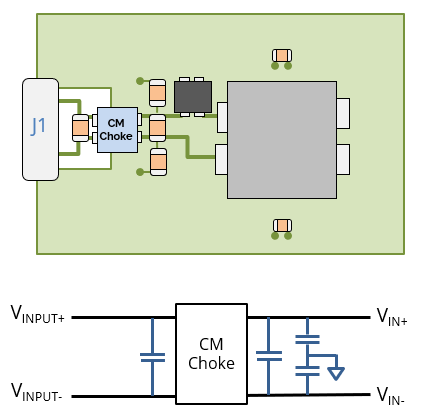EMC Question of the Week: July 7, 2025

If a board-mounted common-mode choke connects directly to the connector pins, with no Y-capacitors in between, then the common-mode choke should be
- bifilar wound
- low loss
- lossy
- removed
Answer
The best answer is “c.” Low-loss common-mode chokes simply shift cable resonances to another frequency without necessarily providing much attenuation. If the choke is the last component the common-mode current passes through on its way to the cable, the choke should have a lossy ferrite. Lossy common-mode chokes are widely available but rarely marketed as being "lossy." Instead, manufacturers prefer to market them as having a known resistance in a particular frequency range. It's important to look at the published impedance curve to determine how effective the choke will be in a particular application. At frequencies where the impedance is rising or falling at 20 dB/decade, the choke is not very lossy. The common-mode choke will generally be most effective at frequencies where the slope is flatter.
In pi-filters, with Y-capacitors on both sides of the choke, the choke does not have to be lossy to be effective. Nevertheless, even in these cases, some amount of high-frequency loss can help to damp parasitic resonances.
Have a comment or question regarding this solution? We'd like to hear from you. Email us at
